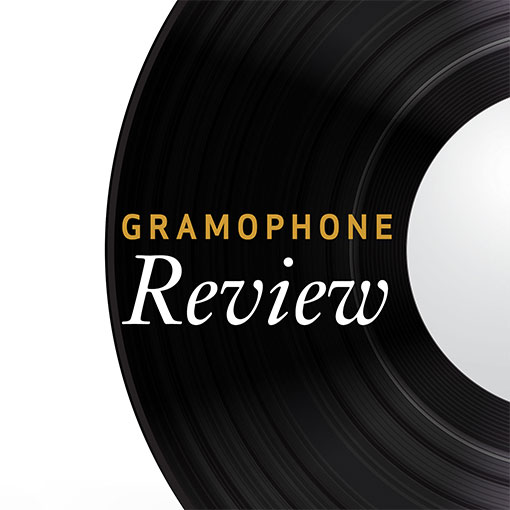Ravel Piano Concertos, etc
View record and artist detailsRecord and Artist Details
Composer or Director: Maurice Ravel
Label: EMI
Magazine Review Date: 7/1991
Media Format: CD or Download
Media Runtime: 65
Mastering:
DDD
Catalogue Number: 754158-2

Tracks:
| Composition | Artist Credit |
|---|---|
| Concerto for Piano and Orchestra |
Maurice Ravel, Composer
Cécile Ousset, Piano City of Birmingham Symphony Orchestra Maurice Ravel, Composer Simon Rattle, Conductor |
| Concerto for Piano (Left-Hand) and Orchestra |
Maurice Ravel, Composer
Cécile Ousset, Piano City of Birmingham Symphony Orchestra Maurice Ravel, Composer Simon Rattle, Conductor |
| (Le) Tombeau de Couperin |
Maurice Ravel, Composer
Cécile Ousset, Piano Maurice Ravel, Composer |
Author: Christopher Headington
The first impression of this Ravel G major Concerto is of vivacity combined with delicacy, and that initial view is sustained throughout what follows. Cecile Ousset and Simon Rattle manage the difficult transition to the E major second subject in the first movement adroitly, and in what follows they rightly refuse to allow the busyness of the writing to become breathless. In all, this is stylish playing. If one has any criticism, it must simply be that it sounds a little safe and less than fully spontaneous. But make no mistake, it is secure and enjoyable. The acid test of musicianship in this work, some would say, is the soloist's eloquent opening melody in the slow movement, and Ousset passes it without, however, eclipsing the more tender approaches of other pianists, notably Pascal Roge (Decca) and Jean-Philippe Collard (EMI—a Gramophone Award-winner); for evidence of real affection here, one awaits the entry of the orchestra and its coolly tender woodwind solos. The finale has all the verve it needs, but the notoriously difficult bassoon solo at 2'03'' could be crisper.
The darkly smouldering Left-hand Concerto is placed as the last of the three works here, with Le tombeau de Couperin second. Rattle ushers in the first piano cadenza with great dramatic strength, and Ousset matches him in attack and command in a fine performance that brings out the power of the language without exaggeration. This is a distinguished account of the work, with the right element of tendresse in the second subject and alarming tension in the jazzy middle section. It is excellently recorded, with realistic piano and orchestral sound and a well judged balance. Ousset's fine technique serves her well in Le tombeau de Couperin, which offers a substantial plus for this CD when Roge and Collard only offer shorter Ravel pieces as a fill-up (Lortie on Chandos plays Faure's Ballade). Although there could be more tonal charm and sublety here, and the ''Forlane'' is distinctly hasty, this is a useful account of a work that is unusually challenging to pianists (it rarely appears in public recitals). The final Toccata is thrilling.
Of the alternative performances of the concertos, all are well recorded. Roge is stylish, and Collard perhaps even more so, despite an editing fault near the end of the D major work. But Louis Lortie, though normally an outstanding Ravel pianist, disappoints here by being too free rhythmically and losing momentum, notably in the Left-hand Concerto.'
The darkly smouldering Left-hand Concerto is placed as the last of the three works here, with Le tombeau de Couperin second. Rattle ushers in the first piano cadenza with great dramatic strength, and Ousset matches him in attack and command in a fine performance that brings out the power of the language without exaggeration. This is a distinguished account of the work, with the right element of tendresse in the second subject and alarming tension in the jazzy middle section. It is excellently recorded, with realistic piano and orchestral sound and a well judged balance. Ousset's fine technique serves her well in Le tombeau de Couperin, which offers a substantial plus for this CD when Roge and Collard only offer shorter Ravel pieces as a fill-up (Lortie on Chandos plays Faure's Ballade). Although there could be more tonal charm and sublety here, and the ''Forlane'' is distinctly hasty, this is a useful account of a work that is unusually challenging to pianists (it rarely appears in public recitals). The final Toccata is thrilling.
Of the alternative performances of the concertos, all are well recorded. Roge is stylish, and Collard perhaps even more so, despite an editing fault near the end of the D major work. But Louis Lortie, though normally an outstanding Ravel pianist, disappoints here by being too free rhythmically and losing momentum, notably in the Left-hand Concerto.'
Discover the world's largest classical music catalogue with Presto Music.

Gramophone Digital Club
- Digital Edition
- Digital Archive
- Reviews Database
- Full website access
From £8.75 / month
Subscribe
Gramophone Full Club
- Print Edition
- Digital Edition
- Digital Archive
- Reviews Database
- Full website access
From £11.00 / month
Subscribe
If you are a library, university or other organisation that would be interested in an institutional subscription to Gramophone please click here for further information.





